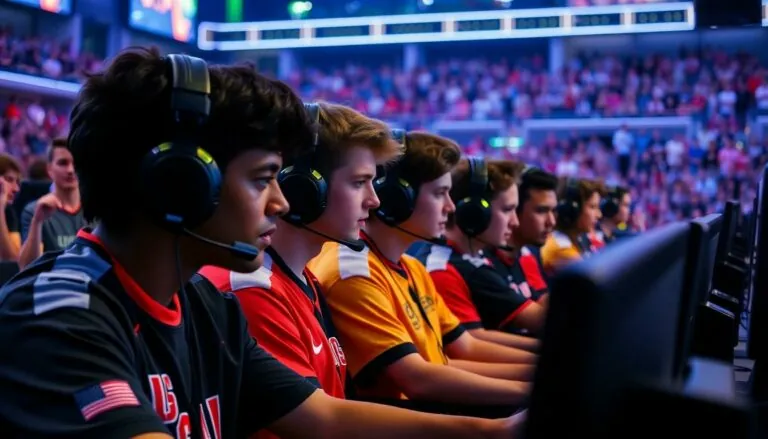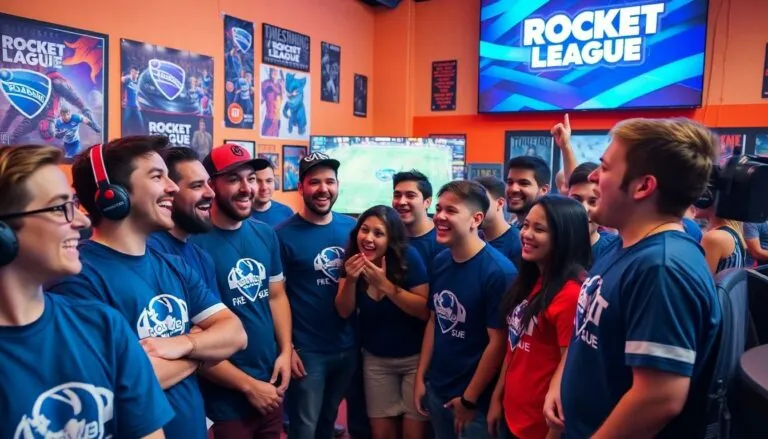When it comes to gaming, few titles have managed to knock players off their couches quite like Wii Sports. Launched alongside the Nintendo Wii, this revolutionary game turned living rooms into arenas, and couch potatoes into athletes. Who knew swinging a remote could lead to a virtual tennis championship?
Table of Contents
ToggleOverview of Wii Sports Nintendo
Wii Sports launched alongside the Nintendo Wii in November 2006, revolutionizing gaming with its engaging motion controls. This game features five distinct sports: tennis, baseball, bowling, golf, and boxing, allowing players to participate in diverse activities. Each sport utilizes the Wii Remote, enabling players to mimic real-life actions, enhancing immersion and enjoyment.
The title’s popularity stems from its family-friendly design, appealing to both casual and experienced gamers. Players of all ages can easily grasp the gameplay mechanics, fostering social interactions during friendly competitions. Wii Sports encourages movement, making it a unique experience compared to traditional gaming.
Nintendo designed Wii Sports to serve as both a game and a demonstration of the Wii’s innovative technology. The title was instrumental in showcasing the capabilities of motion-sensing controls. This focus on physical movement attracted a wide audience, including those who may not typically engage in video games.
Notably, Wii Sports became one of the best-selling video games of all time, with over 82 million copies sold worldwide. Critical acclaim highlighted its ability to promote exercise and community engagement. Many players established their own competitive leagues, introducing a new element of camaraderie.
Additionally, Wii Sports played a significant role in popularizing the Wii console itself. Its inclusion as a bundled game contributed to the console’s sales success. The impact of Wii Sports on gaming culture remains evident, influencing future titles that prioritize physical activity and social interaction.
Gameplay Mechanics
Wii Sports engages players through interactive gameplay that accurately simulates real-life athletic activities. Each sport encourages physical movement and coordination, appealing to a broad audience.
Sports Included
Tennis, baseball, bowling, golf, and boxing represent the five core sports in Wii Sports. Players swing the Wii Remote to serve or hit in tennis, mimicking actual court actions. In baseball, pitching and batting movements replicate those seen in real games. Bowling features a simple mechanic of rolling the controller like a bowling ball towards pins. Golf requires players to simulate the swing needed to hit the ball accurately. Boxing introduces players to dynamic punches, providing an immersive fighting experience. Each sport offers unique challenges, ensuring that players remain engaged and entertained.
Controls and User Interaction
Wii Sports utilizes the Wii Remote’s motion-sensing capabilities for intuitive controls. Players swing, throw, or punch their way through various sports, with actions directly reflecting their physical movements. The gameplay requires minimal button presses, allowing for natural interaction. In tennis, players aim their swings to control ball direction. Baseball offers players the ability to pitch and hit based on their stance. Bowling relies on precise wrist movements to achieve strikes. Golf players adjust their swings and aim to improve their performance. All these control mechanics enhance the interactive experience, making every match exciting and competitive.
Graphics and Sound Design
Wii Sports features a distinct visual and audio design that enhances gameplay immersion. Its unique aesthetics and engaging sounds set the tone for an enjoyable gaming experience.
Visual Appeal
Characters in Wii Sports exhibit a cartoon-like charm, giving the game a friendly atmosphere. Each sport area is vibrant and colorful, appealing to various age groups. Environments, like tennis courts and bowling alleys, include detailed backgrounds that add depth without overwhelming users. The animation, smooth and fluid, allows players to focus on their performance rather than distracting visuals. Simple yet effective menus ensure easy navigation, contributing to a seamless gaming experience.
Audio Experience
Sound design plays a critical role in enhancing the emotional engagement of players. Each sport features distinct sound effects, such as the satisfying thud of a bowling ball hitting pins or the clap of a tennis racket hitting a ball. Background music complements gameplay, keeping energy levels high during competitive matches. Character voices provide encouragement, adding a playful touch and fostering a sense of friendly competition. This thoughtful audio layout immerses players, making every match feel alive and dynamic.
Impact on Gaming Culture
Wii Sports profoundly shaped gaming culture by emphasizing physical activity and social interaction. This title became a benchmark, with its influence felt across multiple gaming genres.
Influence on Motion Controls
Innovative motion controls defined Wii Sports. Players experienced a new level of immersion through its use of the Wii Remote’s capabilities. By mimicking real-life movements, it transformed the way people engaged with video games. Players swung, tossed, and struck in ways that closely mirrored actual athletic actions. Developers took notice, leading to the incorporation of similar technologies in future games. Titles like Just Dance and other fitness-oriented games followed suit. Motion-controlled gameplay not only captivated casual gamers but also encouraged fitness enthusiasts to embrace gaming.
Contribution to Family Gaming
Wii Sports made gaming accessible to families. Its design attracted players of all ages, breaking traditional barriers. The game’s simplicity fostered friendly competition, as family members engaged with one another in sports. Gathering around the TV for bowling or tennis matches became a new family activity. This bonding experience highlighted the importance of social interaction in gaming. As families played together, they built lasting memories and promoted healthy lifestyles. Its popularity catalyzed the development of family-friendly titles, encouraging developers to prioritize casual gameplay in future projects.








